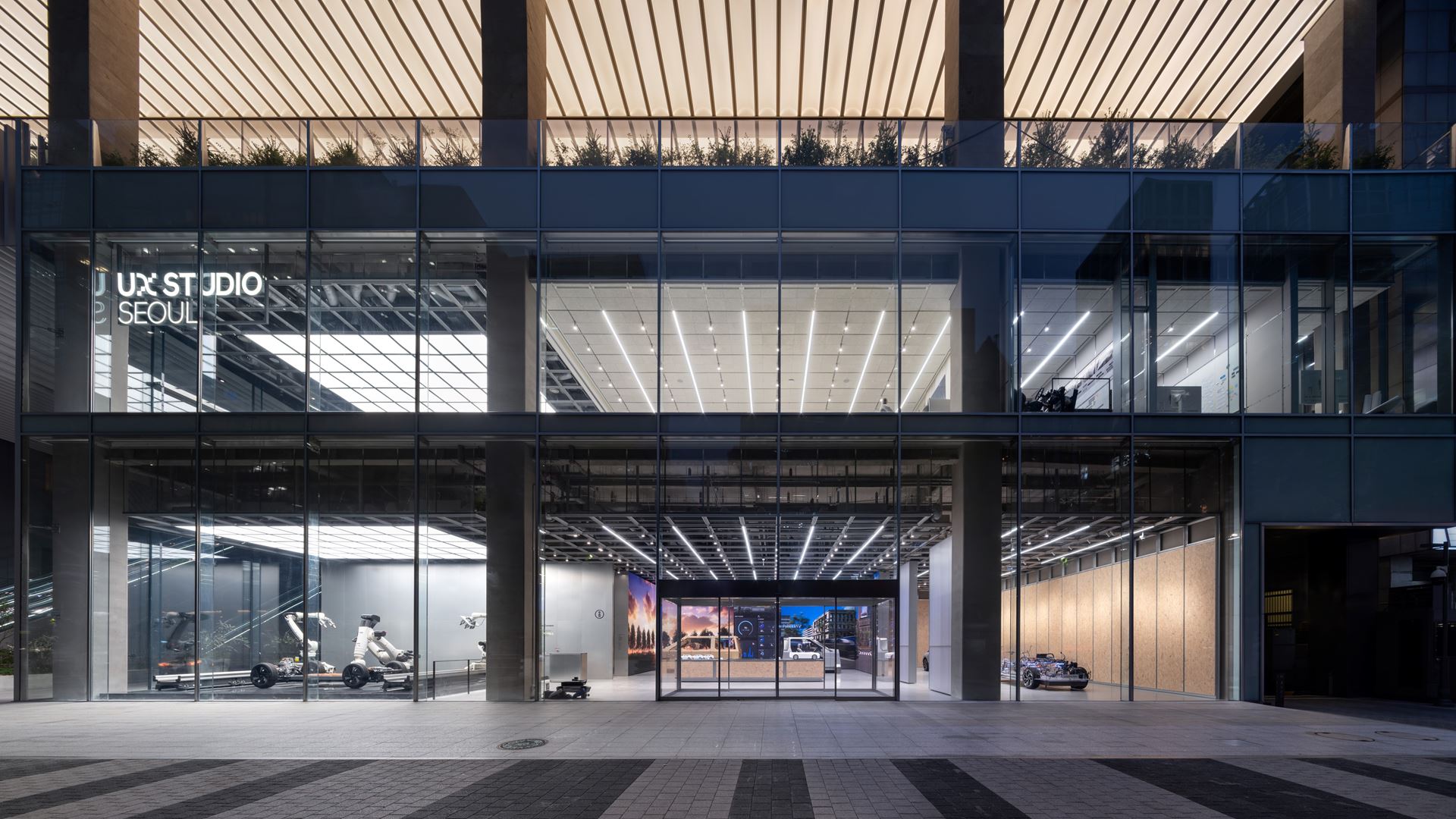- UX Studio Seoul is one of the world’s first participatory open research hubs, engaging customers in designing future mobility experiences
- The Group aims to advance mobility user experience (UX) by integrating real user insights directly into vehicle design and development
- Visitors can test UX concepts using VR, join research programs, and explore the Group’s software-defined vehicle (SDV) architecture in the Open Lab
- UX researchers and selected customers work together to validate mobility UX concepts through real-world simulations in the Advanced Research Lab
Hyundai Motor Group (the Group) is opening the ‘UX Studio Seoul’ in Gangnam – an iconic Seoul district and tech startup hub – on July 3. The new participatory research center is designed to co-create future mobility experiences in collaboration with users, marking a significant milestone in the Group’s ongoing journey of innovation.
The UX Studio Seoul is one of the first open research platforms in the global automotive industry where customers can actively participate in the development of mobility user experience (UX) and apply their insights to UX concepts. Customers can freely explore various future mobility environments, take part in pioneering UX research, and experience firsthand how customer feedback influences vehicle features and their development.
“Our vision for the best UX goes beyond convenience to foster a truly inspiring mobility experience,” said Hyolin Kim, Vice President and Head of the Feature Strategy Group at Hyundai Motor Group. “At the heart of this vision is the voice of our customers. UX Studio Seoul is not about delivering a one-way experience – it’s a collaborative hub where customer insights are directly integrated into the actual vehicle development process.”
The opening of UX Studio Seoul reflects the Group’s commitment to revolutionizing user experiences amidst a paradigm shift driven by electrification and autonomous driving. The studio will showcase the Group’s ability to deliver differentiated value across all aspects of mobility, including driving performance, infotainment systems, and convenience features, ensuring that every touchpoint enhances customers’ mobility experience.
Open Lab: Mobility User Interaction and Exhibitions
The first floor of UX Studio Seoul features the ‘Open Lab’, an interactive space divided into three distinct areas: UX Test Zone, SDV Zone, and UX Archive Zone. Each area is thoughtfully designed to provide visitors with unique opportunities to explore the cutting-edge technologies and research processes that define the Group’s approach to mobility UX.
- UX Test Zone offers visitors an opportunity to understand the UX research process through three sections: UX Insight, UX Concept, and UX Validation.
- UX Insight introduces the overall UX research process through large displays. Visitors can submit their ideas about mobility UX after experiencing experimental vehicle doors, seats, and center consoles equipped with key UX concepts.
- UX Concept features a wooden study buck[1], allowing visitors to explore various UX concepts such as seating arrangements, storage features, and moving consoles. VR devices enable visitors to experience these features in an immersive environment.
- UX Validation includes a validation buck[2] for driving simulations, where visitors can interact with various in-vehicle devices as part of a virtual driving environment projected on LED panels. The system’s eye-tracker monitors the driver’s gaze, which is then analyzed for test evaluation and validation.
- SDV (Software-defined Vehicle) Zone highlights Hyundai Motor Group’s state-of-the-art SDV hardware and software technology, divided into two sections:
- E&E Architecture features the electrical and electronic (E&E) architecture introduced at the ‘Pleos 25’ developer conference. This architecture reduces system complexity by consolidating the high-performance vehicle computer (HPVC) and zone controllers, and enables continuous software updates by decoupling hardware and software developments.
- SDV Testbed allows visitors to interact with the Group’s next-gen infotainment system, Pleos Connect, based on Android Automotive OS (AAOS). Pleos Connect enables seamless mobile-to-vehicle integration and incorporates the AI voice assistant Gleo AI, allowing advanced voice control of infotainment features.
- UX Archive Zone documents the Group’s UX journey, offering sensory-themed exhibitions that highlight milestones in the evolution of the Group’s UX. The first exhibit, themed around Visual Experience, showcases advancements in information display technologies, such as instrument clusters, center consoles, head-up displays (HUDs), and digital side mirrors.
Advanced Research Lab: Immersive Research Space
The‘Advanced Research Lab’ is an immersive UX research facility located on UX Studio Seoul’s second floor. Its features are divided into three areas: UX Canvas, Feature Development Room, and Simulation Room – Arc. These areas are designed to facilitate in-depth studies and prototype testing for UX researchers and pre-recruited customers.
- UX Canvas is a multi-purpose space for workshops and seminars between UX researchers and customers.
- Feature Development Room is a dedicated research lab for the development of individual UX concepts such as autonomous driving UX, high-performance vehicle UX, and human-machine interface (HMI). The room allows a flexible redesign of the space to quickly adapt to various UX concepts and themes. It is only accessible to Hyundai Motor Group UX researchers and selected participants.
- Simulation Room – Arc allows researchers to validate their UX concepts developed from UX Canvas and the Feature Development Room, using a configurable test buck adaptable from compact sedans to full-size SUVs, six-axis motion simulators, and a large, 191-degree curved display made of 730 LED modules. The room simulates real-world environments, from global cities, and motor racing tracks for high-performance vehicles. The user and driving data are collected through the camera and sensors for future UX research and innovations.
Hyundai Motor Group is operating its global UX Studios in cities around the world, including Shanghai, Frankfurt, and Irvine, CA. to incorporate region-specific user feedback into UX concept development. The Group aims to integrate user preferences worldwide in their vehicle designs, delivering consistent innovation and value across markets.
UX Studio Seoul replaces the original UX Studio, which opened in Seocho in 2021, offering an expanded and more accessible space for visitors. Situated at Hyundai Motor’s office in Gangnam, Seoul, the facility aims to deliver the Group’s core values of mobility UX more effectively to a wider audience.
Previously, the UX Studio served as an internal collaboration platform for Hyundai Motor Group researchers across vehicle planning, design, and engineering. User research, a key component of the UX development process, was conducted privately, involving selected customers.
For more information about the Group’s UX Studios or to reserve an experience program, visit https://www.hyundai.co.kr/uxstudio.
[1] A study buck is an experimental prototype created during the vehicle development process, used for usability testing and validation.
[2] A validation buck is a life-size simulation model replicating the internal structure of a vehicle, equipped with functional interfaces for testing and evaluation.

